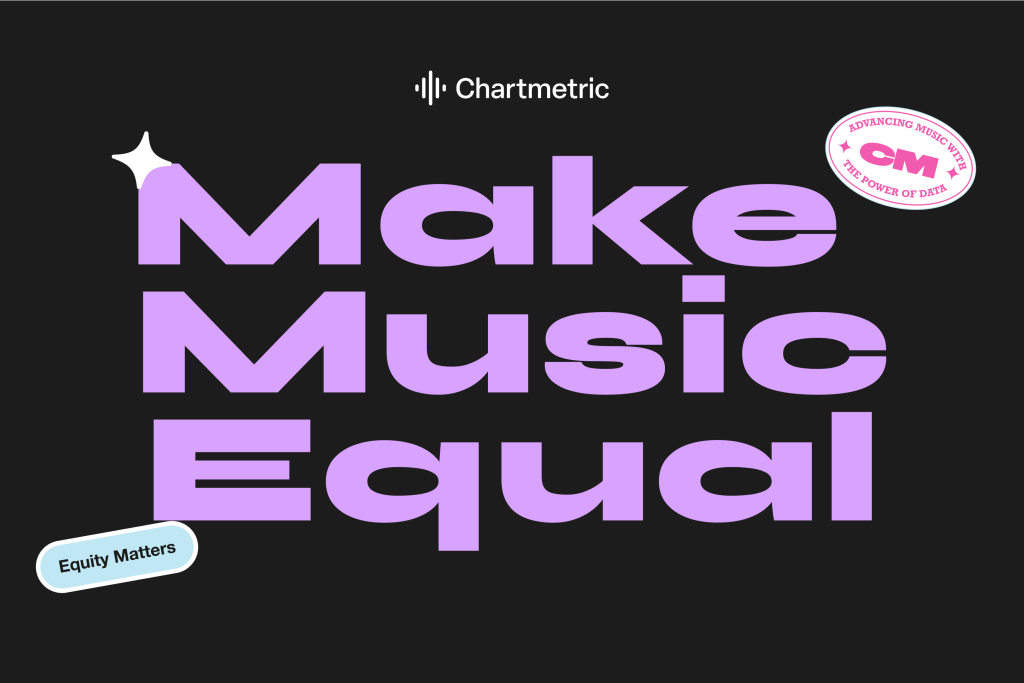
Chartmetric’s ‘Make Music Equal’ 2025 report offers an in-depth analysis powered by its ongoing artist pronouns initiative and dataset. Drawing from over 1 million self-declared artist pronouns as a proxy for gender representation, the report breaks down gains and persistent disparities across the music industry into 10 bite-sized, data-driven insights.
The following comes from DMN partner Chartmetric.
This initiative is more than just a technical achievement in data tracking—it’s a direct response to the persistent structural inequities that have long shaped the music landscape. The project’s foundation is a database of over 1 million artists worldwide with collected pronoun data for more than 728,000 solo acts. The results are stark—79% of these acts use he/him pronouns, while only 18% use she/her, and 3% use they/them pronouns.
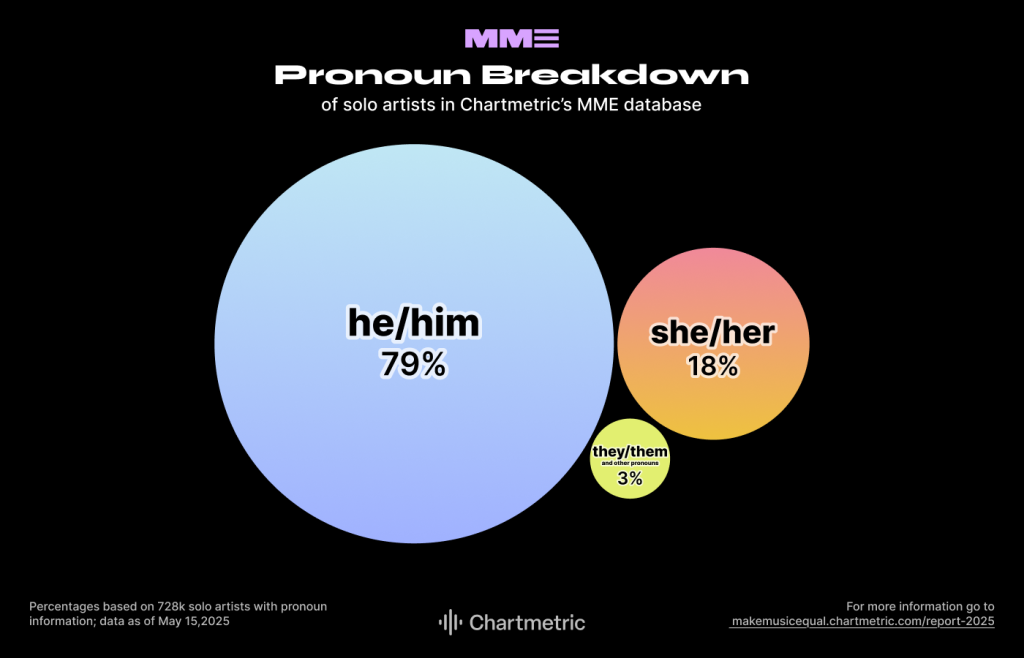
This breakdown is not just a snapshot of today’s music world—it’s a quantifiable measure of the gender gap, making visible what has too long been invisible in the music industry. Unlike traditional gender studies that assign identities, Make Music Equal begins with something simpler: pronouns, pulled from over a million artists’ bios on streaming platforms, as well as self-identified on the Chartmetric platform.
This method avoids the pitfalls of top-down categorization and respects the nuances of gender and pronoun usage—an important caveat as pronoun use does not always align with gender identity for every artist.
The ‘Make Music Equal’ database is global in scope, tracking artists from 230 countries and territories and spans more than 1,000 genres. Artists are grouped into six tiers—Legendary, Superstar, Mainstream, Mid-Level, Developing, and Undiscovered—based on their Chartmetric artist score.
Key Findings: Where Inequity Persists
The Top % of Artists | In 2020, only 26% of top-100 artists globally were female. By 2024, that number rose to over 33%, reflecting progress but still highlighting a significant gap.
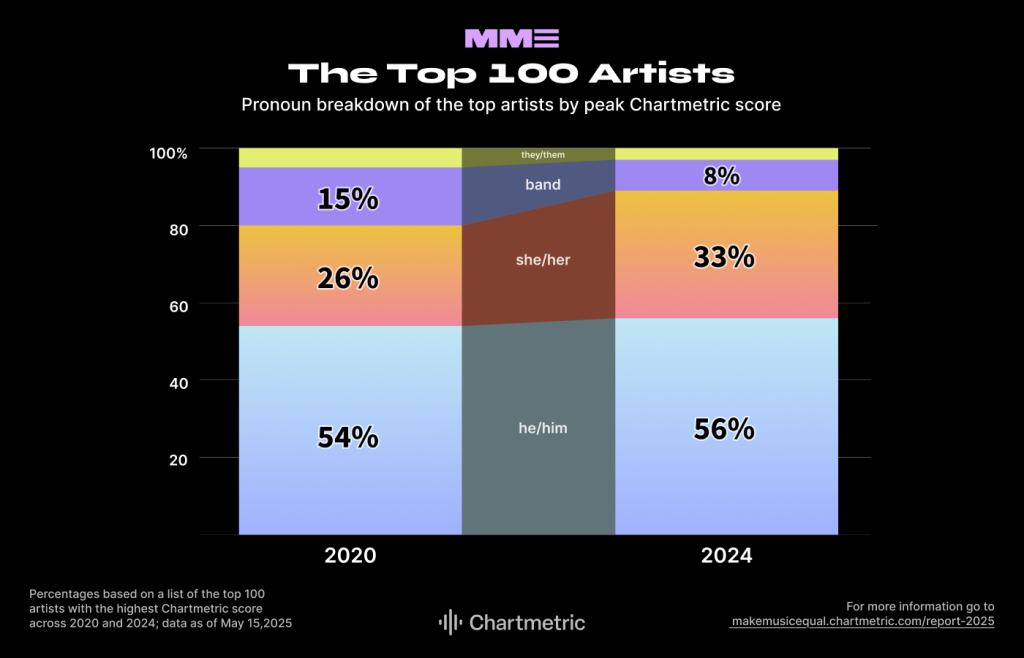
Behind The Screen | TV syncs are nearly balanced between men (29%) and women (26%), while film and video games lean more male, with 15% and 6% of releases coming from women, respectively
Genre Disparities | Latin and R&B genres now lead in female representation, with artists like Karol G, ROSALÍA, and SZA reshaping norms. In contrast, rock, electronic, and classical genres continue to lag, underscoring the uneven pace of change across musical styles.
On Stage | At concerts and festivals, the share of female solo acts has grown by 3% since pre-pandemic times. Why? The reason might be economic: with the rising cost of touring, solo artists are more feasible—and more visible—than bands.
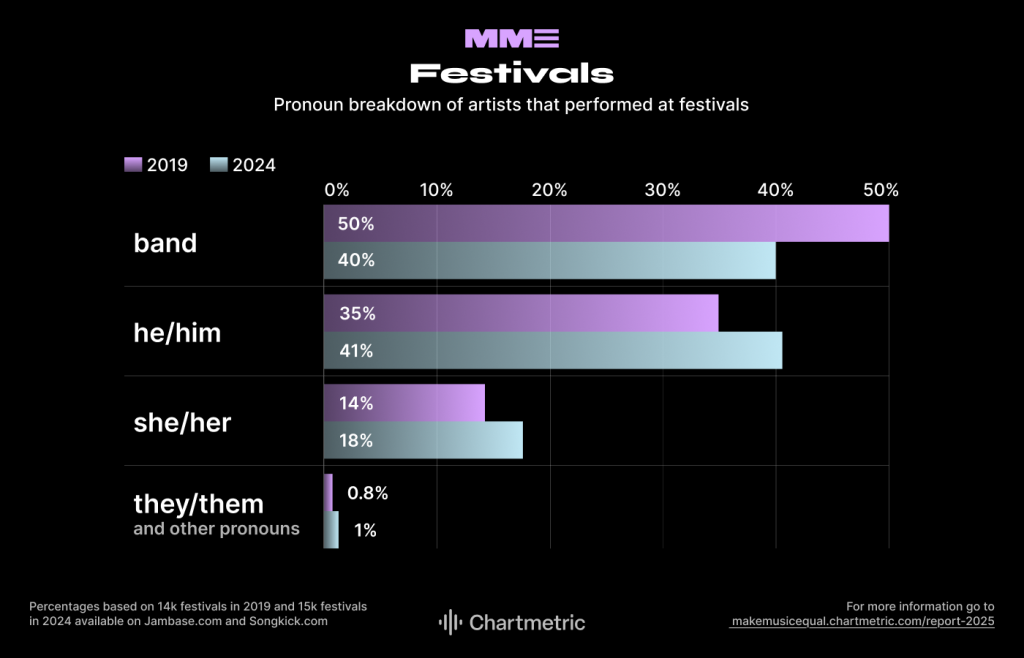
Track Releases | The decline of bands is also highlighted in the data. Tracks released by bands have decreased nearly 8%—paving the way for solo female and male artists. Solo female artists track releases increased by 2%, while solo male track releases increased by 5%.
Gender Gap By Country | Taiwan leads as the country with the smallest gender gap among solo artists, with only 29% more men than women performing in the country. Bangladesh sits at the opposite end, with a striking 83% gap favoring male artists compared to their female counterparts.
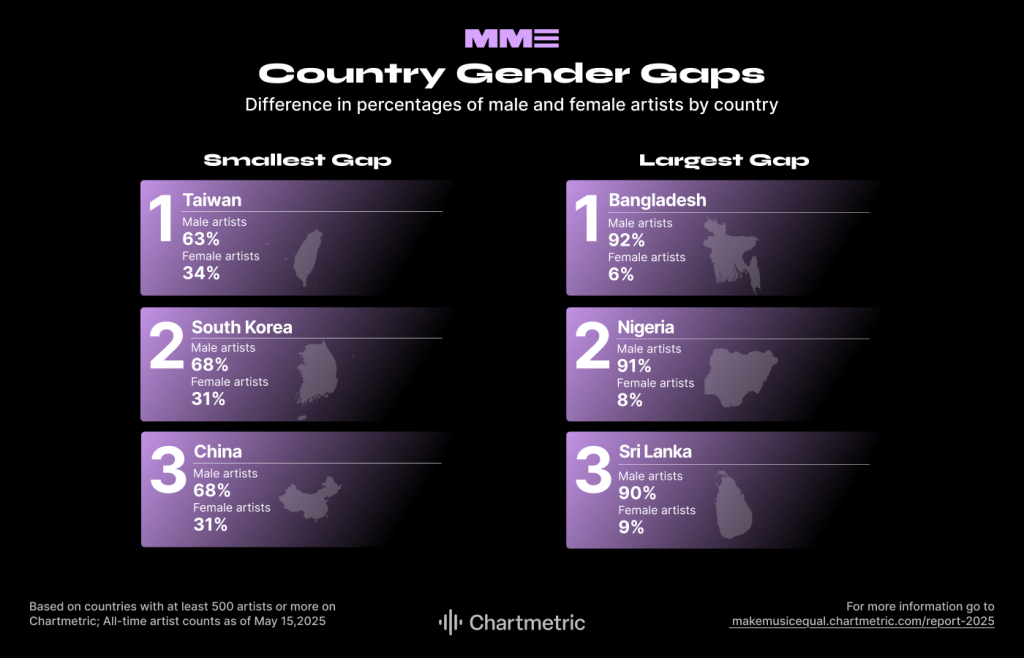
Why Does This Matter for Decision Makers?
The ‘Make Music Equal’ report is more than just a statistical exercise—it’s a practical tool for labels, publishers, booking agencies, and anyone tasked with building rosters, programming festivals, or curating playlists. By providing transparent, up-to-date data on artist identity, the database empowers teams to audient and balance rosters or lineups for greater equity. It also allows tracking progress over time and benchmarking against industry averages. The report can inform marketing, A&R, and talent development strategies with a lens on inclusion.
“Pronoun metadata at its core is a basis for accountability. When the data speaks clearly, it becomes harder for industry stakeholders to ignore the disparities. That’s the goal of our Make Music Equal report, to provide a clear view across all sectors of the industry and show where change is still needed,” shares Sarah Kloboves, Content and Marketing Manager at Chartmetric.


